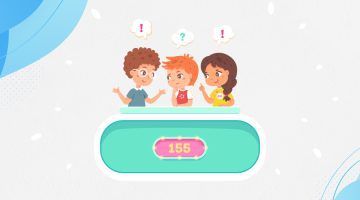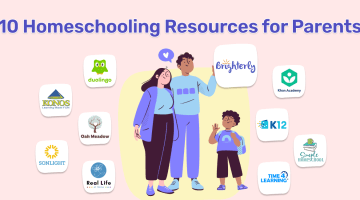8 Math Board Games for Kids
Updated on September 20, 2024
Not as many children enjoy math as other subjects. But there are numerous ways teachers can make lessons fun. Firstly, kids are much more likely to interact in a class even if the topic doesn’t seem exciting if their teacher uses fun games instead of boring exercises.If you are looking for ways to help kids brush up on math skills, try bringing excitement into the class. Incorporating the best math board games for kids in the teaching process can combine learning and fun. Don’t believe it? Get comfy and get ready to be convinced.
You may be surprised by how simple math game board ideas such as boards, decks of cards, dice, and cards can impact your child’s growth. Moreover, game boards designed for entertainment can improve a child’s social and educational development. Let’s look at the benefits of math board games:
1. Board Games Offer Chances for Early Education
Cool math games help young kids learn to identify probability and number sequences, count spaces, and improve eye coordination while moving cards and pieces on the board. Additionally, a child learns patience while waiting for their turn by following all the game rules.
2. Board Games Boost Language Skills
Some math board game ideas are stealthy and help kids work on skills they have struggled with without them realizing what is happening. For instance, there are particular online homemade math board games on Brighterly.com. Games like Math Twister, 101 Points, and more help a child expand vocabulary and flex spelling skills. Parents and children should register at Brighterly to access games and other valuable resources like videos.
3. Board Games Sharpen a Child’s Focus
When a child plays board games without interruptions, a game can lengthen a child’s attention span. Thus, a child can remain focused and complete a board game without obstruction, especially in today’s world filled with digital distractions. As a result, a child can improve concentration and attention span on various tasks, boost self-confidence, and develop positive self-esteem.
4. Board Games Help Kids Understand the Value of Teamwork
Kids can be exposed to meta-messages of life through board games. For instance, a child can learn a valuable math lesson about luck when playing a game because a child’s luck can change within an instant, either for better or worse.
Math board games for kids also encourage children of all ages to team up and complete specific tasks — something children should continue to do throughout life. You have The Brainiac Game, which pushes school-age siblings to cooperate, build relationships, and work towards shared goals.
1:1 Math Lessons
Want to raise a genius? Start
learning Math with Brighterly
 Let's start learning Math!
Let's start learning Math!
How to Make a Math Board Game Project
A time may come when children will be tasked with school projects such as making a board game. The important thing students need to determine is the goal of the game board.
Specific questions should linger in your mind, such as:
- How will you present information in existing and new ways?
- How will you test players’ problem-solving and critical thinking?
With these questions ironed out, crafting the perfect activity for your students from homemade math board game project ideas is a bit easier. What materials do you need for that?
A board
Two dies
Two stacks of black cards
A velvet pouch
A black notebook for writing down game rules
Also, the following steps will guide you in developing a math board game for drilling facts:
Step 1: Take a deck of cards with one equation on the front and the answer on the back
Step 2: Assign point values to each correct answer
Step 3: Decorate the game board to either propel players forward or set them back
The game relies on a timer to help you measure how many questions players can answer within a minute. The person who answers many questions wins and crosses the finish line.
8 Math Board Games
1. Shelby’s Snack Shack Game
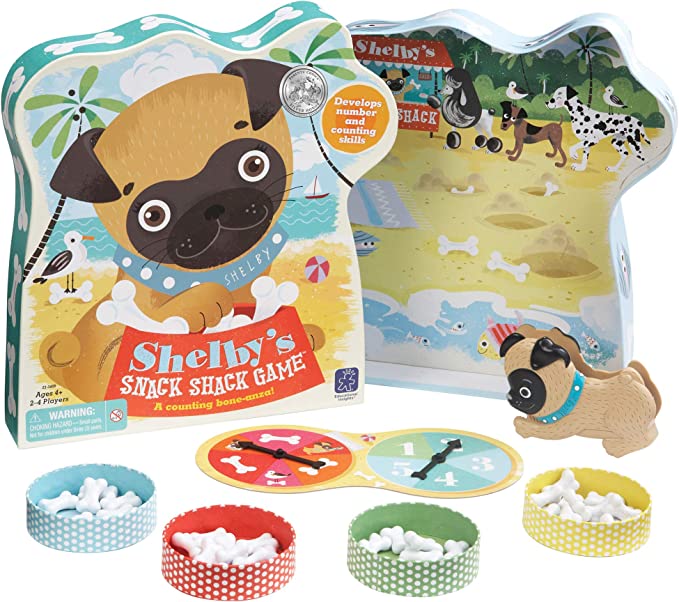
This is a fun and educational game for preschoolers to learn math and counting. Your child can play this game from age three and compete with their siblings to collect the most bones for their dog bowl.
All you need are two spinners, ten bones per bowl, and a bowl for each player. Place them on the board with the Shelby Squeezer. This game has it all, from stealing bones to avoiding gulls.
2. Fish Matching Tile Game Stix
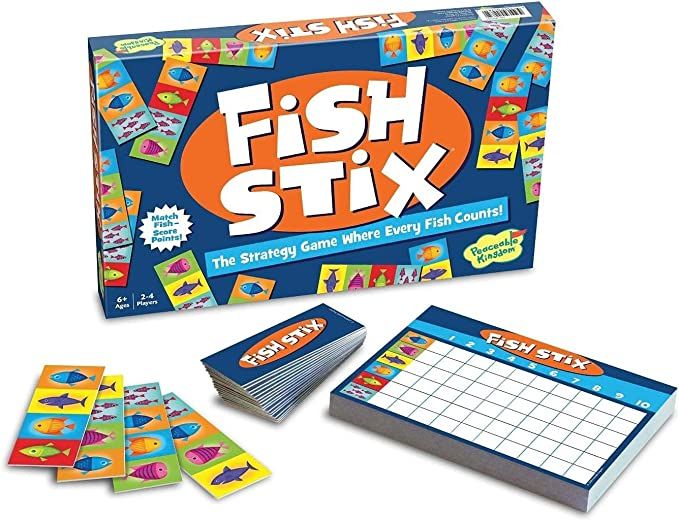
This colorful and enjoyable game helps your child improve their matching, color recognition, and other skills. It is suitable for kids over six and can have up to four players. Anyone can play this board game, which does not require much strategy.
With instructions, Fish Stix, and a picture scorecard, the kids use their smarts and senses to earn points. Your little one just has to guide the six Fish Stix to the tenth box on the scorecard to win. But they have to do it before the others. Your fish moves in the same direction as it swims, adding some flair to the game.
3. Sum Swamp Game
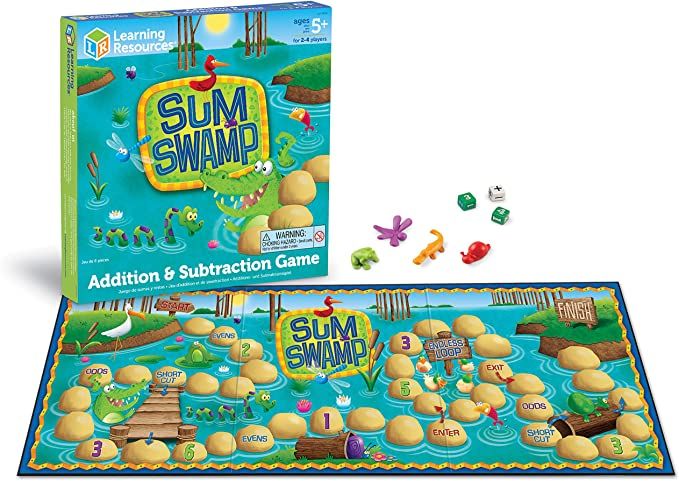
For a cute game that makes simple math fun for kids five and up, consider the Sum Swamp Game. It is perfect for homeschooling and classroom use, and it is one of the 3D shape games online. Your child will get two kinds of dice ᅳ two regular dice and an operation die with plus and minus signs.
How does a player win? By reaching the finish line after crossing the swamp. But the kids have to watch out; there are spots on the board with hidden surprises, making the journey more exciting!
4. Money Bags Coin Value Game
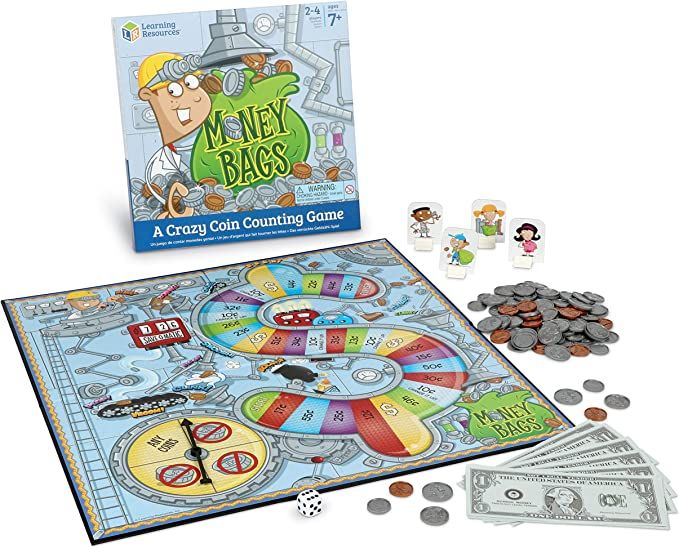
This board game is designed to teach kids one concept — money. It helps them understand the value of dollar bills and coins. Here, they have to amass as much ‘game money’ as possible before the end.
Players use a spinner and a die to move along the game board till they reach the finish line. Each time they land on a space, it shows the amount of money they’ve won. There are also special spots and a chance to trade game money at the game bank for interest.
The game is fun as kids collect, exchange, and count money to the finish line.
5. Prime Climb
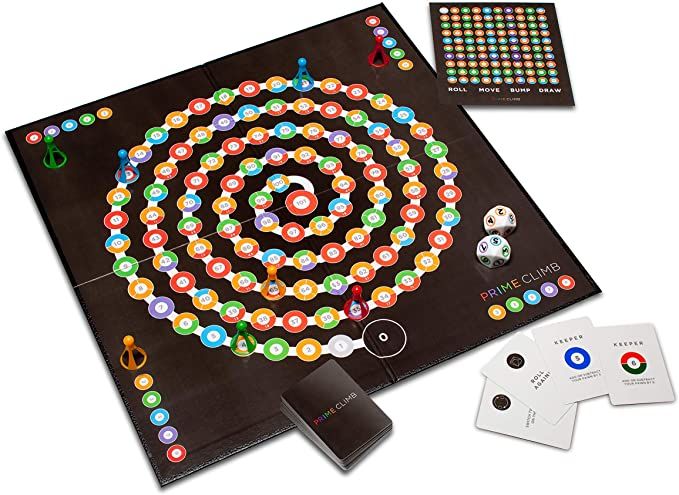
If you have older children from ten years old, Prime Climb is the game for them. As long as you can get 2-4, you’re good to go, especially at family board games and after-school clubs.
Yes, the game has rules and variations. But the good news is that they are easy to learn. The best part is that it’s infinitely replayable, thanks to an endless mix of strategy and luck. Having a knowledge of primary calculations like addition and multiplication will give players an advantage.
To win, get both pieces to drop precisely at the center of 101 circles. And the color-coded board board is a healthy touch for kids with auditory learning.
6. Junior Game Thinkfun Math Dice
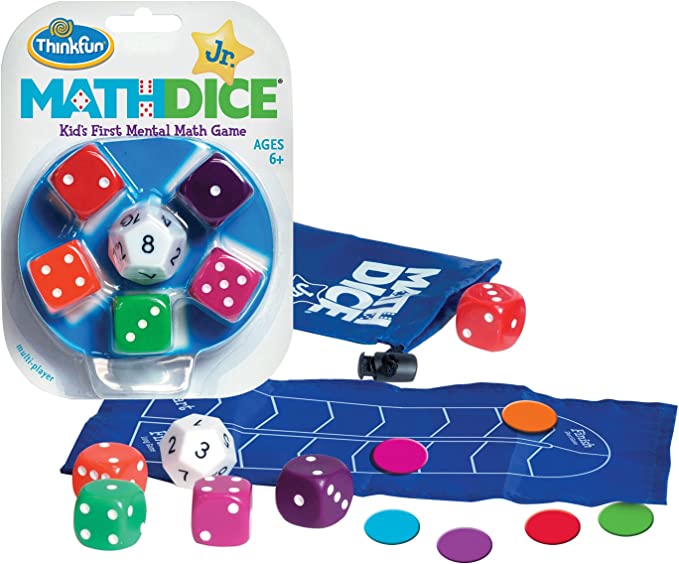
This game helps develop addition and subtraction skills, as winning depends on solving those kinds of problems. There’s also a version for seniors and more advanced players that you can enjoy yourself.
At least 2 players need to join to make it work, and the game can involve students of all ages.
The rules? Just follow instructions and solve basic math problems! Start by rolling five 6-sided dice or a 12-sided target die. The youngest player gets to roll all the dice while all players observe the target die to know which number the player will add or subtract to their steps to the finish line.
7. MOBI Fast Fun Numerical Tile Game
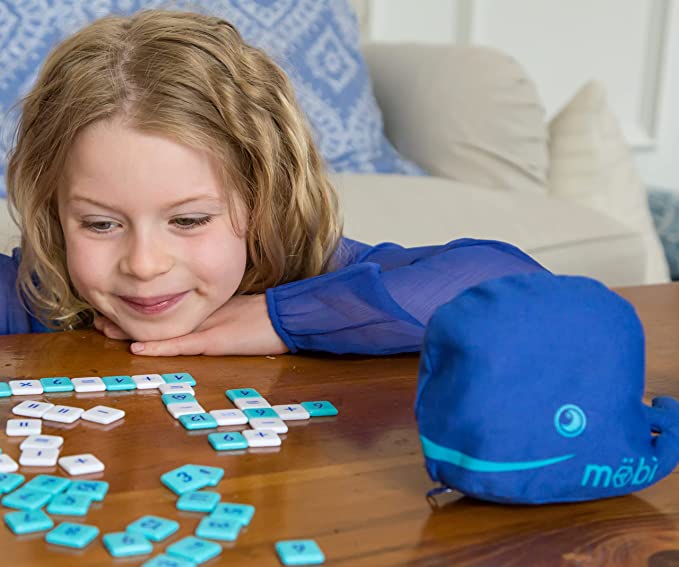
Here, there is a simple objective — use the available blue number tiles to build a “Pod” as fast as you can. If your children or students are above six years old, go with this game. It works when played solo or with a group, and the maximum number of people to participate is 4.
Since this game is portable, your kids can carry it around and have the best time!
MOBI Fast Fun Numerical Tile Game supports cooperative play, math, hand-eye coordination, and fine motor skills. Depending on the children’s skill levels, you can take off the multiplication and division tiles. That way, they can actually enjoy the experience.
8. High Seas ADDventure Addition Game
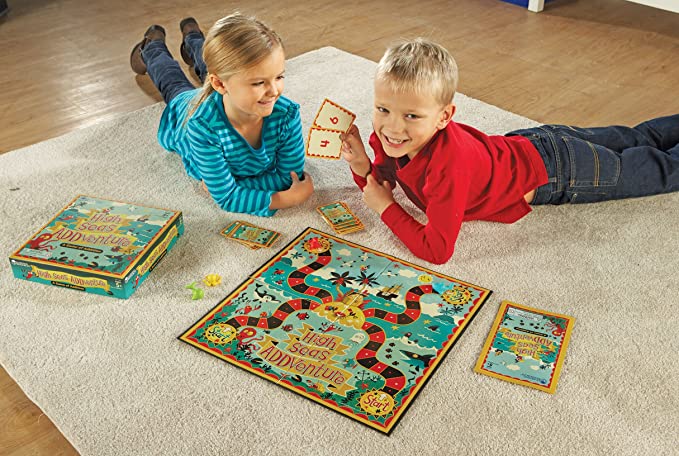
In this final recommendation, players sprint around the game board to become the first to touch the island. It works when each kid gets five cards the other players can see and then flip over a card on the community pile. Next, the other player(s) race to see which card each player has, then find another to add up to 10.
The first one to holler “10” and snatch that community card gains ground towards the island. What’s more? You have those sneaky shark and octopus cards — hands down the biggest tide-turners — letting participants steal or swap cards to liven up the race!
Conclusion
Now that you’ve been introduced to eight board games that will take your child’s interest in math to the moon, what will you do next? Remember, it’s about more than math; we’re talking about holistic learning here!
Rest easy in your search for math games for free because Brighterly has you covered. In the race for better education, tagging math board games along does more than boost learning and arithmetic grasp — it nurtures a real passion for math in young minds.



